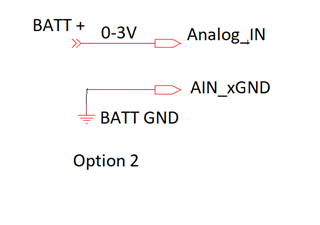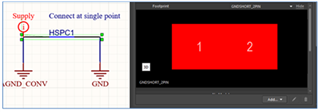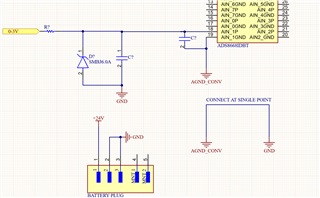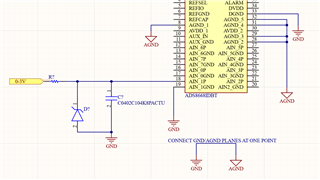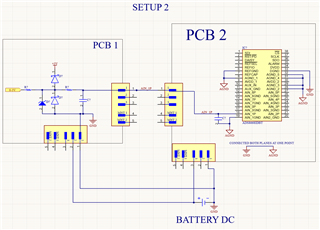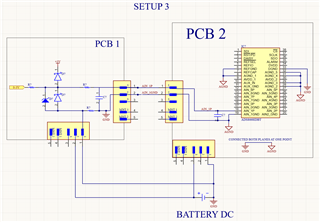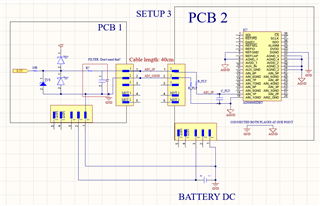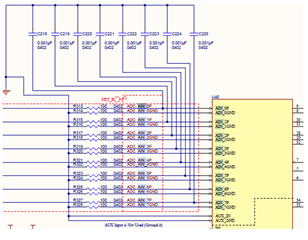Other Parts Discussed in Thread: ADS8688
Hello,
We are using COTS industrial System on module and it has ADS8668 on that board. However, we can't get internal schematics for it.
On their pinout I can see Analog IN and Analog GND. When looking with multimeter, the Analog GND has continuity with overall GND in the system.
We want to use ADC inputs to measure some voltages in the system (such as battery, capacitor voltages). It doesn't need to be extremely precise.
The Analog IN is coming from our PCB, and we don't have isolation between AGND and DGND. We have Battery GND connecting overall system GND. What harm it would be connecting the Batt + straight to Analog IN and connecting Batt GND to Analog GND (as I mentioned above, when checking with multimeter Analog GND already has continuity with overall system GND which is connected to Battery GND)?
Thanks



